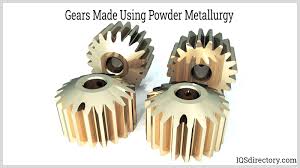Automobile engineering is quite competitive, and leading car brands focus on innovation and research. They want to introduce cutting-edge features to woo the target buyers. To offer the end-users an exceptional driving experience and make cars with rugged components, these brands use parts made with powder metallurgy. The powder metallurgy parts in various vehicles last long and offer exceptional performance and consistency.
In powder metallurgy, metal powders are turned into solid products by using excessive pressure and high temperature. This technology is instrumental in accurately making complex car engine parts and accessories. Entities specializing in creating PM components cater to various types of clients, including carmakers.
Why choose PM to develop crankshaft sprockets?
Among other car engine parts used with the PM technique, the crankshaft sprocket—also called timing gear—needs special mention. It plays a major role in syncing the vehicle’s camshaft and crankshaft, enabling accurate valve timing in models with internal combustion engines.Now, car manufacturers use PM-derived crankshaft sprockets for the following reasons:
- With PM, this component can be developed with great accuracy and tight tolerances.
- PM leads to reduced material waste, thereby enabling cost-efficient manufacturing.
- Crankshaft sprockets are subjected to constant stress and wear. ThePM ensures the components are built rugged. Manufacturers use advanced sintering and hardening to achieve the best results.
Some applications of PM crankshaft sprockets in the automobile sector
Various car brands, including European, Japanese, and US giants, resort to PM crankshaft sprockets for their models.
- Passenger vehicles- PM-derived sprockets are extensively used in regular car models for efficient performance.
- High-performance cars- There are some luxury car companies that also rely on PM crankshaft sprockets for their popular models.
- Commercial vehicles- Various types of trucks are also laden with PM crankshaft sprockets to ensure the models can perform under heavy loads and inclement conditions.
The future of PM in car part manufacturing and applications
There is no denying the obvious advantages offered by PM in car part manufacturing, but there are a few limitations. There are initial tooling expenses, for example. Sometimes, car makers may face difficulty in picking the right partner for acquiring PM components.
Recent advancements in PM technology are expected to help end-users overcome obstacles. Some entities are exploring the possibilities of using 3D printing and powder metallurgy to develop intricate designs. Some contenders are also checking out the possibility of using alloy powders to make PM components more rugged and durable. Using advanced automation in powder metallurgy procedures can help bring down production costs further.
Summing it up
Powder metallurgy has enabled car makers to develop models with more durable and high-performance components, leading to improved brand image and customer loyalty. However, they must focus on picking the right partner to make and acquire such high-precision and pivotal engine components. Choosing vendors with a solid track record and enough design customization options makes more sense. Find out who the leading service providers are so that you can get in touch with them at the earliest to find out more about crankshaft.


